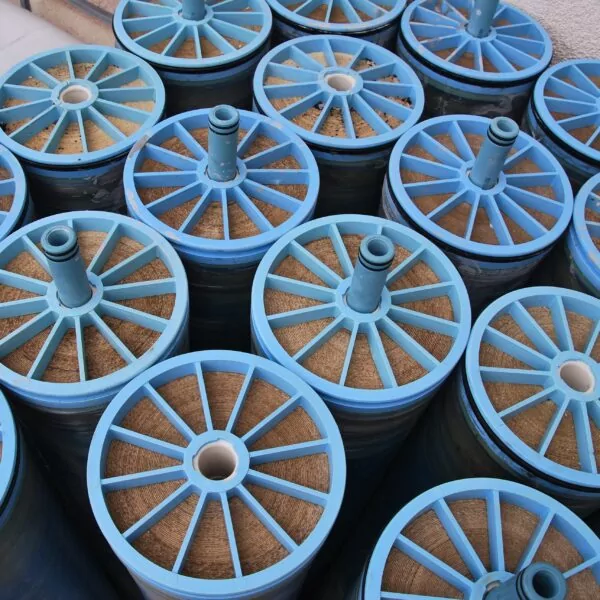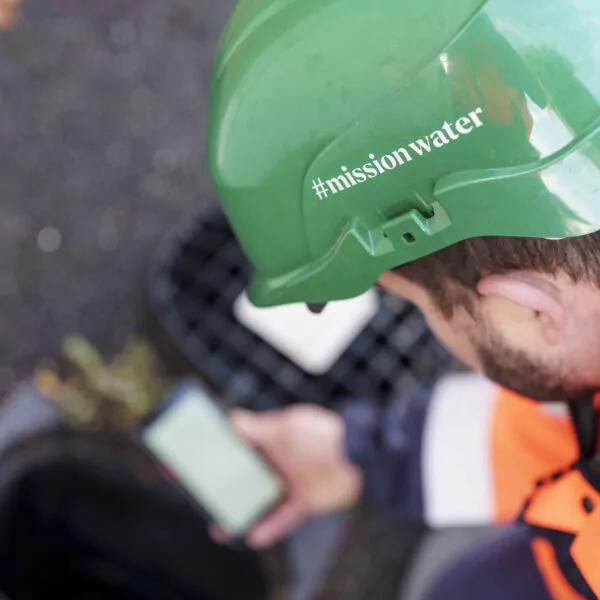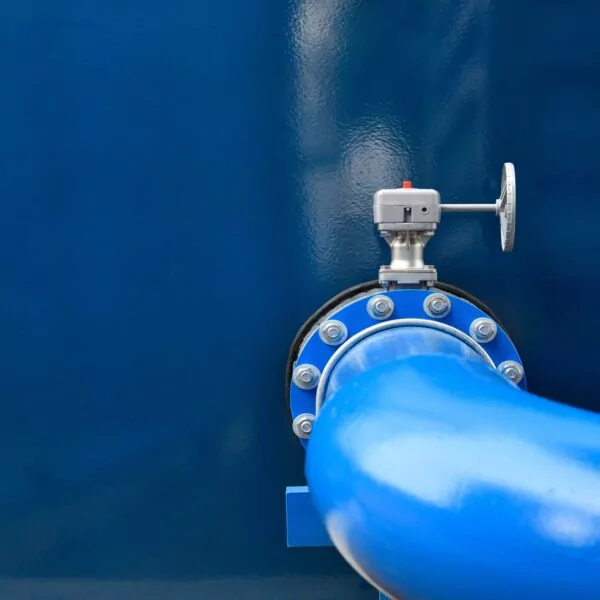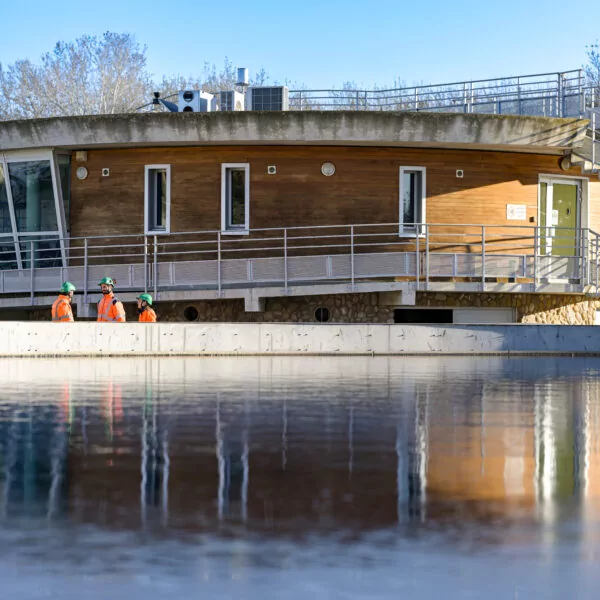Your challenges
Managing municipal drinking water effectively is crucial for public health and environmental sustainability.

Meeting Evolving Regulatory Standards
The drinking water sector faces stricter requirements under the EU Directive 2020/2184, with new limits on PFAS, microcystin, bisphenol A, chlorates, and chlorites taking effect in January 2026. Ensuring full compliance demands proactive upgrades and continuous monitoring.
Ensuring Sustainable Water Management
Utilities must balance treatment efficiency with environmental responsibility. Reducing energy consumption, optimizing chemical usage, and minimizing waste are essential for achieving sustainability goals.
Expanding and Upgrading Infrastructure
Growing urban populations and aging networks require investments in modern treatment facilities and resilient distribution systems to maintain water security.
Guaranteeing Consistent Water Quality
Maintaining high-quality drinking water across an entire network is complex. Factors like contamination risks, varying source water characteristics, and distribution challenges require advanced monitoring and treatment solutions.
How can the Saur group meet your needs?
Saur offers comprehensive solutions that meet these challenges by integrating best-in-class treatment processes, regulatory compliance support, and sustainability-driven design:
Drinking Water Treatment
Drinking water treatment is the process of removing physical, chemical, and biological contaminants—such as sediment, pathogens, and micropollutants—from raw water sources to make it safe for human consumption. This ensures compliance with drinking water quality standards and protects public health.
Contaminants Removed During Drinking Water Treatment
Effective treatment eliminates a wide range of impurities, including:
-
Sediments (sand, silt, suspended particles)
-
Pathogens (bacteria, viruses, protozoa)
-
Chemical contaminants (PFAS, chlorates, pesticides, bisphenol A)
-
Toxins (microcystin, pharmaceuticals, heavy metals)
Steps in the Drinking Water Treatment Process
Coagulation and Flocculation
Coagulation uses chemicals such as alum or iron salts to destabilize particles, while flocculation helps them clump together into larger aggregates for easier removal.
Sedimentation
The formed flocs settle at the bottom, separating most impurities from the water.
Filtration
Water is filtered through media such as sand filters, granular activated carbon, or advanced membranes (microfiltration, ultrafiltration, nanofiltration, and reverse osmosis drinking water systems) to remove residual contaminants.
Disinfection
Final disinfection using chlorine, chloramines, ozone, or UV light ensures pathogens are completely eliminated before distribution.
Drinking Water Quality Standards
Saur ensures strict compliance with the EU Drinking Water Directive 2020/2184, including new thresholds effective in 2026 for:
-
PFAS (0.10 µg/l)
-
Bisphenol A
-
Chlorates and Haloacetic Acids
-
Microcystin-LR, Uranium, and other emerging contaminants
Types of Drinking Water Treatment Systems
Reverse Osmosis Drinking Water Systems
Removes dissolved salts, heavy metals, and micropollutants.
- Advantages: High contaminant removal rate.
- Disadvantages: Higher energy consumption and wastewater production
Granular Activated Carbon (GAC) Filtration
Adsorbs organic compounds, pesticides, and odors.
- Advantages: Effective against taste and odor issues.
- Disadvantages: Requires regular media replacement.
Membrane Filtration
Includes microfiltration, ultrafiltration, and nanofiltration for removing pathogens and fine particles.
- Advantages: Delivers high-quality output.
- Disadvantages: Sensitive to fouling.
Ion Exchange Systems
Exchanges harmful ions with harmless ones, commonly used for water softening and nitrate removal.
- Advantages: Effective for targeted contaminants.
- Disadvantages: Requires regeneration and chemical handling.
Environmental Impact of Drinking Water Treatment
Saur applies energy-efficient process designs and sustainable chemical strategies to reduce carbon emissions, resource usage, and operational costs. Advanced filtration and adsorptive media specifically target emerging pollutants such as pharmaceuticals and PFAS, ensuring a lower environmental footprint while maintaining high water quality.
Our types of solutions
Find out here about all the solutions municipal customers need to supply their residents with drinking water.

- Municipal
Activated carbon
- Wastewater
- PFAS Resolve
- Drinking water
- Micropollutants
Water treatment is evolving to meet ever-stricter regulatory requirements, environmental goals, and public health needs. Activated carbon filtration is a proven, natural, and highly (...)

- Municipal
Membrane technologies
- Wastewater
- PFAS Resolve
- Drinking water
- Micropollutants
- Rainwater
With the emergence of new contaminants—such as PFAS, pharmaceutical residues, and pesticides—water treatment requirements are rapidly evolving. To meet these challenges, the (...)
Talk with our expert
Contact
- Municipal
Water management services
- Drinking water
- Micropollutants
- PFAS Resolve
- Wastewater
Effective water management is vital for the sustainable use of water resources. At Saur, we specialize in delivering advanced water management solutions that cover supply, distribution, (...)

- Municipal
Water reuse
- Resource and recovery
- Rainwater
- Wastewater
- PFAS Resolve
- Micropollutants
Water scarcity, increasing environmental regulations, and the demand for sustainable practices have placed water reuse at the center of global resource management strategies. At (...)

- Municipal
Digital solutions
- Drinking water
- Micropollutants
- PFAS Resolve
- Rainwater
- Wastewater
In today’s rapidly evolving technological landscape, digital water solutions are transforming how water resources are managed. At Saur, we harness advanced technologies—such (...)

- Municipal
Pipe works
- Rainwater
- Wastewater
- Drinking water
For over 20 years, Cise TP, a subsidiary of the Saur group, specializes in the installation and rehabilitation of pipes and networks. Thanks to its certifications and design offices, (...)

- Municipal
Design and build
- Rainwater
- Wastewater
- PFAS Resolve
- Drinking water
- Micropollutants
The Saur group and its various entities have been supporting local authorities in the design, construction and rehabilitation of drinking water production plants and wastewater (...)

- Municipal
Micropollutants removal
- Wastewater
- PFAS Resolve
- Drinking water
- Micropollutants
Micropollutants – emerging contaminants found in trace amounts – pose growing risks to ecosystems and human health. Saur is at the forefront of addressing these invisible (...)
Contact our experts
FAQs
The right system depends on the source and contaminants: reverse osmosis excels at removing dissolved salts; activated carbon is ideal for taste, odor and micropollutants; membrane filtration is optimal for pathogen control.
Environmental effects stem from energy use and chemical dosing. Saur minimizes this through optimized design, targeted chemical use, and renewable energy integration where applicable.
